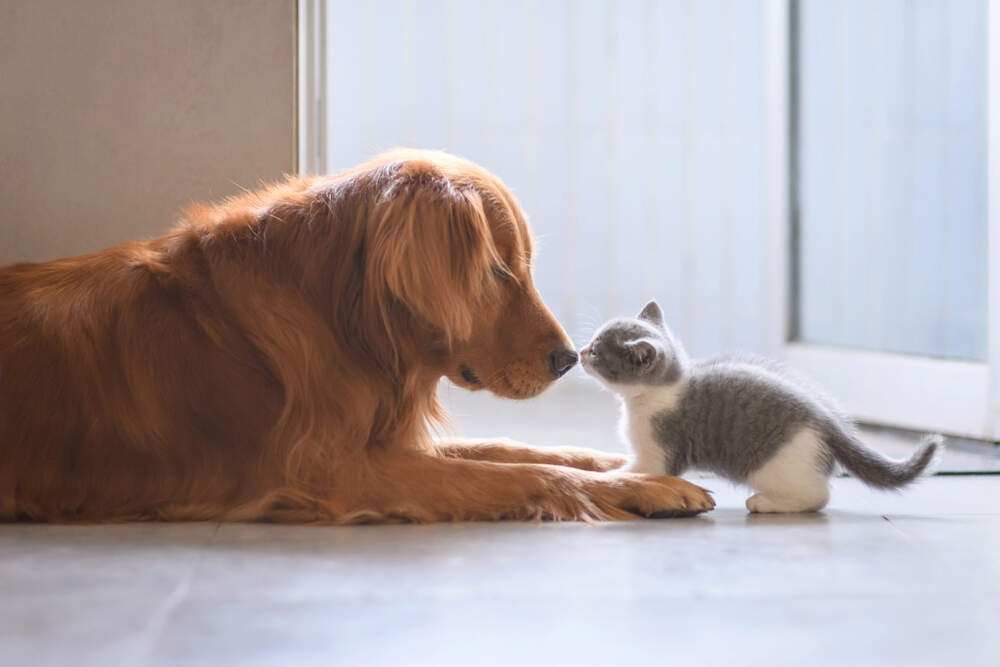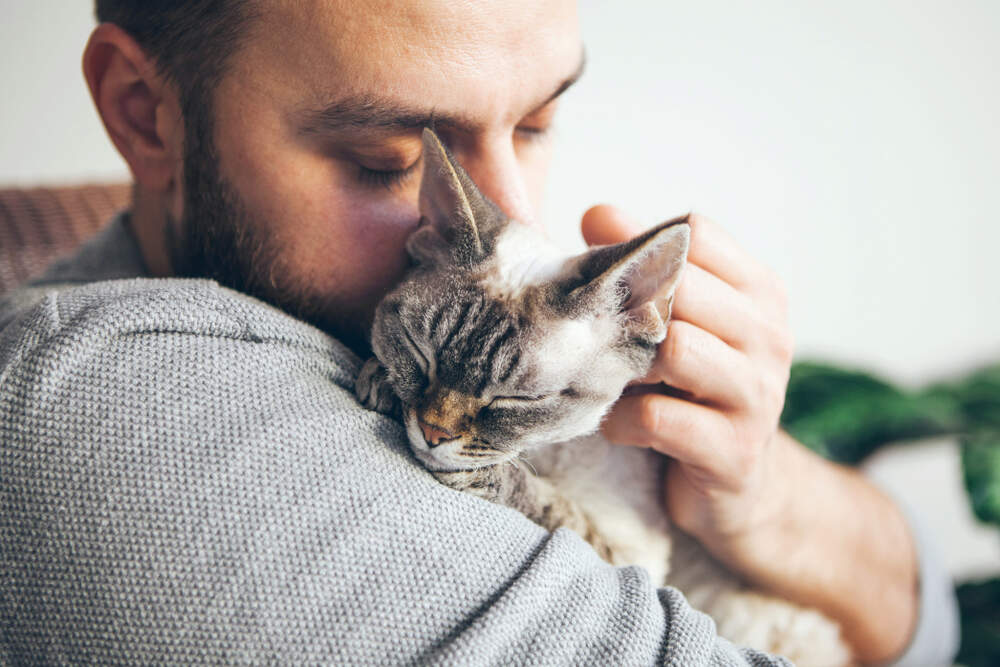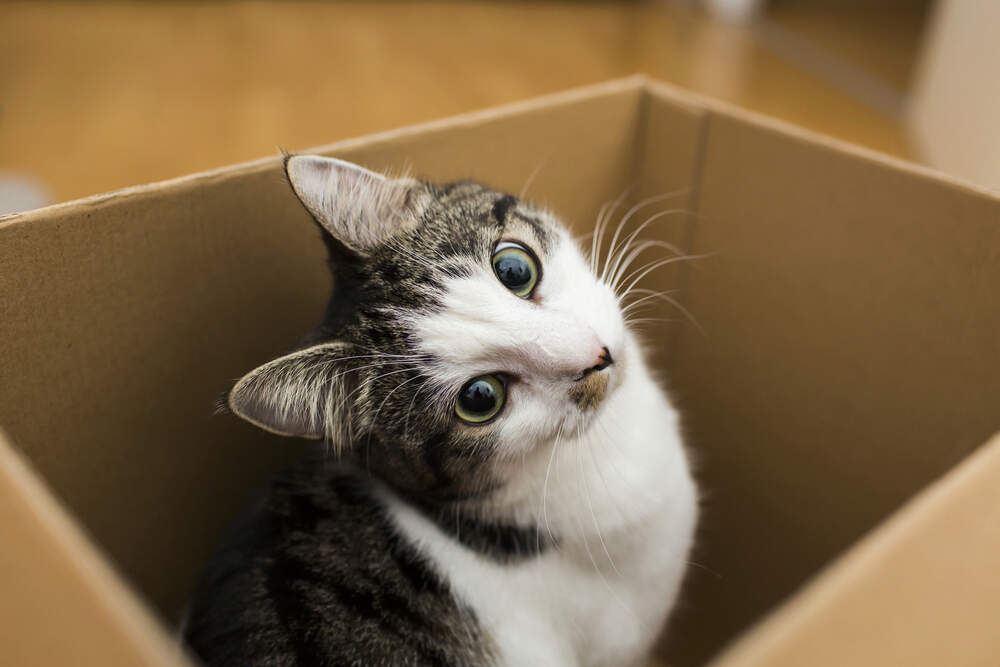How to Introduce Your New Kitten to Your Dog
A house full of kittens and dogs can be one of the cutest and happiest places in the world. To achieve such a harmonious home, you want to introduce your kitten to your dog in the right way. Just as a bad first impression can have a lasting effect with people, the same can happen when introducing a cat to a dog.
Dogs and cats can become good friends, but it takes time. This is because they have very different body language styles that can lead to some mixed signals. A kitten's attempt at play might be interpreted as aggression by your dog or vice versa.1 So be prepared to take every step slowly. It could take weeks or more before they're calm and comfortable with each other. But the result is worth the effort.
Keep Your Kitten in a Separate Room at First
You're going to need to keep your pets separate so they can gradually get used to the smells and sounds of the other in a stress-free environment. Your kitten will need her own comfy room with a litter box, food, water, and a kitty bed.2 A Comfort Zone Calming Diffuser can help her feel safe and relaxed in her new room. This drug-free solution mimics a cat's natural pheromones to help her feel calm and happy.
Start by feeding your kitten and dog at the same time, but in their own rooms with a closed door between them. Slowly move the dishes closer to the closed door that separates them.
After they're calmly eating "near" each other, swap their scents by leaving a towel with your kitten's scent in your dog's room and vice versa. Every now and then, let your kitten roam around the house while your dog is confined to a room. This helps them get used to each other's scents before they meet.
Prepare for a Good First Impression
To make sure first impressions go well, review basic obedience commands with your dog before you introduce them. Make sure your dog still responds well to commands like sit, stay, come, and leave it.2 You'll also want to make sure both are feeling calm whenever they meet face-to-face. Play with both pets separately to expend a little of that extra energy before they meet.
Keep Them Separate for Their First Face-to-Face
Their first meeting should be face-to-face but not in the same room. You'll want to use a screen door or gate to separate them. Make sure your kitten can't squeeze through the door or climb over it. Your dog and kitten need to be able to smell, hear, and see each other without touching each other. Just like you did with the closed door, start by feeding them from a distance and slowly move them closer to each other over time.
Watch Their Body Language
During this phase, it's very important to observe their body language for signs of stress or aggression.3 Does your dog have a prey drive? Is he very focused on your kitten or barking and whining? You'll need to continue to keep them separate if he displays these behaviors.
Ideally, your dog will watch your cat but not fixate on her. You want him to be able to look away from your cat and respond to you.
As for your cat, she should appear relaxed. If she's hissing, puffing her fur, growling, or slinking to the ground, she's feeling scared and not confident. Once both seem pretty chill with each other and can look away sometimes, they may be ready to meet.
Start Slowly with Supervised Visits
Now it's time for supervised visits with both pets in the same room. These introductions need to be done slowly, and your dog should always be on a leash. Your kitten should have places to hide or climb to that are out of your dog's way. These visits might take a few weeks or more before your pets are comfortable with each other.
Take your time. Start on opposite sides of a room, then slowly let them be closer. Some people opt to start the introductions with their dog in a crate before moving on to a leash.
Watch for signs of tense body language. If your pets are relaxed, see if you can distract them or if they stay focused on each other. Will your dog respond to your commands? Keep the visits short at first. Gradually make them longer, and let your pets be closer to each other as long as they act calmly. Reward them with treats each time, so they make positive associations with seeing each other.
Realistically, you might not ever leave your kitten and dog alone until your kitten is older, especially if your dog has a strong prey drive. This isn't because anything's wrong with your dog or your cat. The simple fact is that kittens play a lot, and this can sometimes trigger a dog's prey drive. It's better to err on the side of caution and take as long as you need. Eventually—especially once your kitten is a little older—your pets will be calm around each other. Over time, they could even become good friends.
When introducing a kitten to a dog, remember to keep your expectations realistic. Your two pets might not be best friends right away, and you might need to keep your little kitten separate until he's bigger. It may take some time, but with a bit of patience and preparation, your dog and your cat will get along famously.
Planning to bring a new kitten home? Be sure and review our list of all the supplies you'll want to have ready for him.
1. Paws. "Introducing Your New Cat to Your Dog." Paws.org, https://www.paws.org/resources/introducing-cat-to-dog/.
2. Feinn, Lily. "How to Introduce a New Kitten to a Dog." The Dodo, 3 October 2017, https://www.thedodo.com/close-to-home/how-introduce-dog-to-kitten.
3. Save Them All Resources. "Successfully Introducing Cats and Kittens to Dogs." Best Friends, https://resources.bestfriends.org/article/successfully-introducing-cats-and-kittens-dogs.






